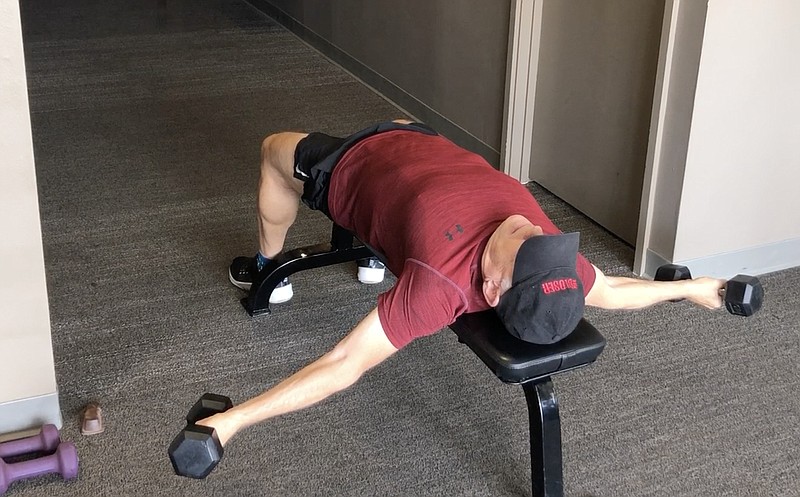Stretching is my new favorite workout. I spent so much time focused on cardiovascular and strength training over the years that I missed the boat on the benefits of a comprehensive stretching program.
This week, I'll discuss a few different types of stretches and present a way to increase flexibility in the chest and shoulders.
All stretches are not created equal. Some are better for a warmup routine while others help improve long-term flexibility. But here's the thing about stretching: There is absolutely no reason that everyone can't enjoy the benefits. There is no fitness level requirement, and stretching is totally free, making it an activity with a very low barrier to entry.
Passive stretching is what most people are familiar with. It's the kind of stretch that is held for 10-20 seconds in a position of mild discomfort. This is the type of stretch people are taught in sixth grade and perform for the rest of their lives. It's a good type of stretch, but not the most effective for long-term benefit.
Proprioceptive Neuromuscular Facilitation (PNF) stretching increases range of motion by increasing the length of the muscle with a very specific technique. The idea is to contract the muscle intentionally at its end point, then relax to take the stretch further. This "contract-relax" cycle allows one to "trick" the body into bypassing the myotatic reflex. Also called stretch reflex, the myotatic reflex is the body's way of saying, "The muscle is fully stretched, I need to contract it to avoid a tear."
The thing is, a myotatic reflex can prevent a really good stretch from taking place. This reflex usually kicks in right at the end point of one's range of motion. So, you pause at that end point, contract and hold, then relax and stretch a bit farther.
This is the technique used by athletes, physical therapists and stretch gyms. It produces long-term gains in flexibility and has been proven effective through research in both trained and untrained individuals.
There are also hybrid stretches that sort of combine the benefits and ease of passive stretching with some PNF properties. This week's exercise is a good example of that. The DB Chest Stretch and Press is a cool way to feel a stretch while sneaking in a few strength training repetitions.
[Video not showing up above? Click here to watch » arkansasonline.com/822pnf/]
1. Select a pair of medium weight dumbbells and lie on your back on an exercise bench. Start with the dumbbells hovering at chest level.
2. Open your arms, allowing the weight of the dumbbells to stretch your chest muscles out while keeping tension at the same time.
3. Continue stretching for a few seconds, then press up by extending both arms over the chest.
4. Continue this pattern of a 3-second stretch followed by one repetition until you reach 10 repetitions.
5. Perform two sets.
I love this exercise because the resistance of the dumbbells creates the stretch in the chest, but there's also tension required to maintain the stretched position. It's a juxtaposition where the exerciser isn't quite sure if they are strength training or stretching, but it feels fantastic. Enjoy!
Director of business development and population health solutions for Quest Diagnostics, Matt Parrott began this column 20 years ago at Little Rock. He has a doctorate in education (sport studies), a master's in kinesiology and is certified by the American College of Sports Medicine.

